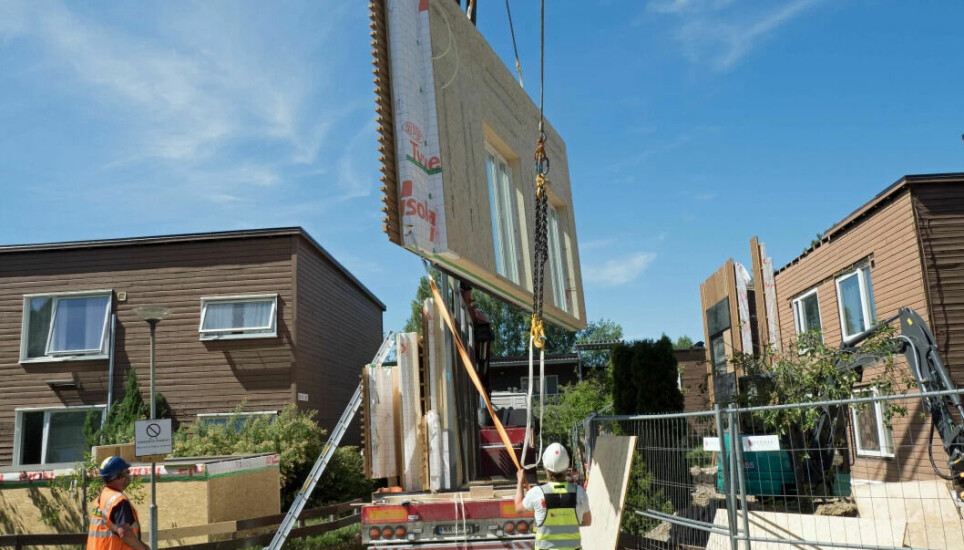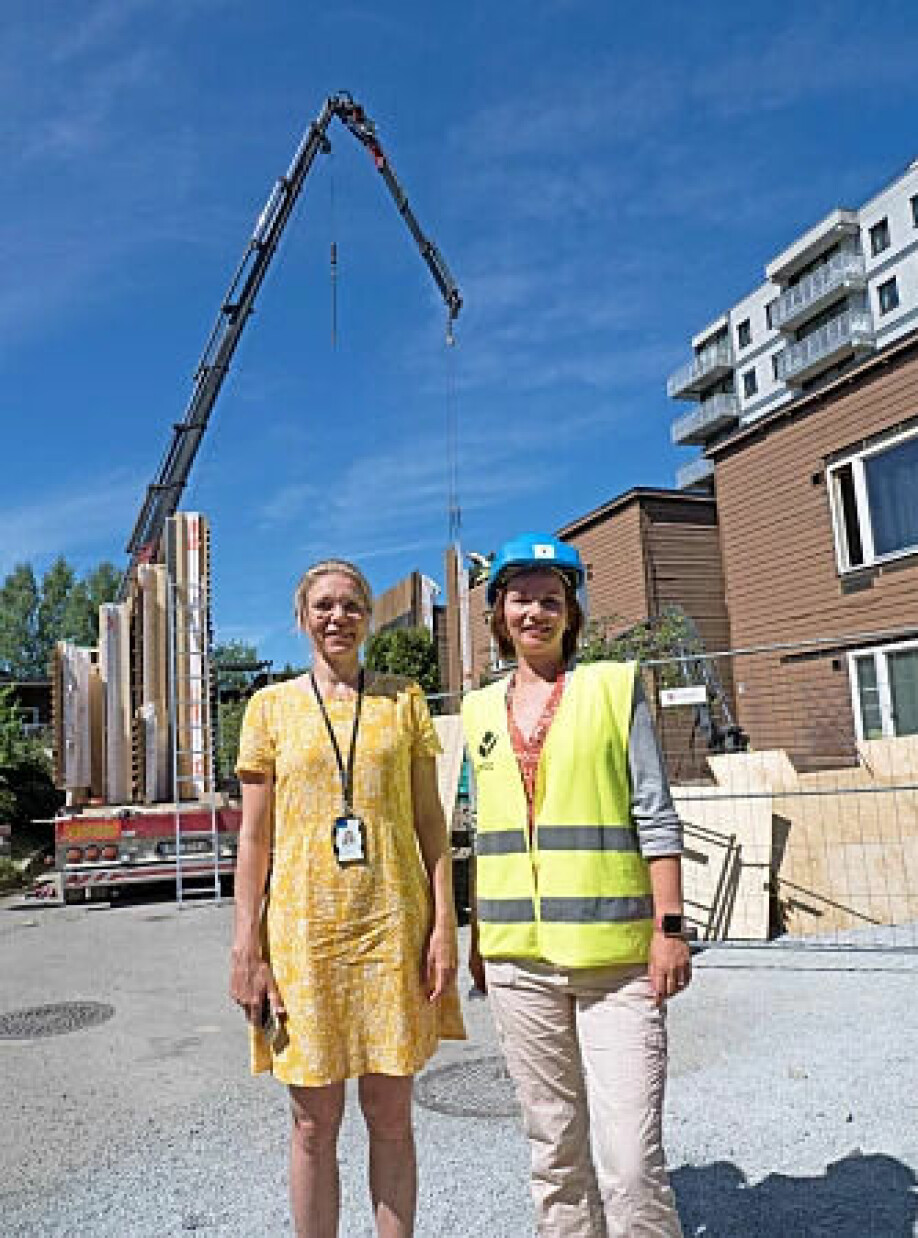
Here’s how to make old houses climate-friendly
Workers hoisted new walls over the old ones, and saved both money and the climate. Now the research project will show more people how to renovate their homes in a climate-friendly way.
If Europe is going to meet its climate goals, countries will have to build less and renovate more. Buildings account for 40 per cent of Norway’s energy consumption.
Renovation rates need to triple
Every year, one in a hundred buildings is upgraded. The goal of the EU is to triple that percentage, says Kari Thunshelle. Nearly nine out of ten buildings in use today will still be in use in 2050. In other words: It isn’t enough to just make all new buildings climate friendly.

Thunshelle is a senior researcher at SINTEF, Norway’s largest independent research institute. She has worked on completely new ways to upgrade a structure to save energy. The 4RinEU research project has worked with demonstration buildings in Norway, the Netherlands and Spain.
Researchers have used prefabricated elements, such as walls that are completed in a factory, instead of carpenters building them on the construction site. Prefabrication is easier and faster at all levels, Thunshelle says.
Avoided having to move out
For the Norwegian demonstration project, a building with eight apartments in Oslo was refurbished without the residents having to move out. The contractor Lindal Gruppen made new, tailor-made elements, complete with insulation, solar cells and ventilation, at its factory outside Risør in southern Norway. It’s often difficult in these kinds of projects to find space for ducts and units that are needed to get the right ventilation, Thunshelle said.
The new walls were transported to Oslo, hoisted into place with a crane and mounted on the outside of tired, worn walls from 1971. The result: An improved indoor climate, much less energy use for heating and much shorter time on the construction site.
Will issue a guide
The latest results from Spain and the Netherlands will be ready this summer. The Norwegian project, for its part, is moving forward.
“We will publish a guide on how you can upgrade with prefabricated elements, based on the experiences from the project,” Thunshelle said to sciencenorway.no.

“The research projects are a great way to develop new solutions for the market,” she says. The fact that there's been done research on these solutions make the owners of the buildings feel safer. The research also helps project planners as well as those who will produce components and equipment.
Should become standard
“We’ve learned from the round that was just completed, and are bringing this forward in new projects so that we can create standard solutions for the market,” Thunshelle says. A natural next step is to reuse old materials.
The EU and the Norwegian authorities are developing and implementing increasingly stringent energy requirements.
“Prefabricated solutions will speed up the time it takes to upgrade a building, and there will be much less hassle for building owners and for residents. When a lot can be done at the factory, there will be less time on the construction site, less rigging and not much disruption for residents, so they can remain in their homes during the construction period,” Thunshelle said.
More renovation
Travel restrictions and other changes during the coronavirus pandemic have led many people to spend more money on renovating their homes.
“The big question now is whether we can expect continued growth in the renovation market, or whether we have to prepare for a downturn,” said Kåre Elnan, commercial manager for Prognosesenteret, an independent market analysis company that specializes in the Nordic construction and property markets.
He explains on the company’s website how it doesn’t appear that homeowners are planning fewer renovation projects this year.
Elnan expects that almost one in five households will renovate the exterior of their home this year. A quarter of them say that they will change the siding or façade, while a little more than one in ten plan to change the roofing.
Translated by Nancy Bazilchuk
References:
Roberta Pernetti et.al.: Repository of Deep Renovation Packages Based on Industrialized Solutions: Definition and Application. Sustainability, June 2021.
Sverre B. Holøs et.al.: Process-related risks in refurbishment of dwellings using prefabricated wall elements with integrated PV and ventilation ducts. 1st Nordic conference on Zero Emission and Plus Energy Buildings, IOP Conference Series: Earth and Environmental Science, 2019.
———
Read the Norwegian version of this article at forskning.no
































